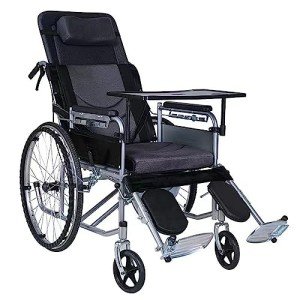How Bariatric Wheelchair 24 Inch Seat Became The Hottest Trend Of 2024

Bariatric Wheelchair Seat Width
Seat Width
Having the correct seat width is very important to wheelchair users who invest longer periods in their chairs. Too narrow a seat will cause pressure on the hips and thighs which might lead to sores or pressure points. Having too broad a seat can likewise make it tough for the user to reach the hand rims to propel themselves or maneuver in little spaces.
To measure the correct seat width a person would rest on a chair usually and have their measurement taken throughout their lap at the best point which is typically their hips. A wheelchair determining tape can be utilized to measure this, however a yard stick is chosen as it prevents individuals from covering the tape around their hips which would give an inaccurate result.
The basic wheelchair seat width is 16" (narrow adult), 18" (basic adult), and 20" (wide adult). For bariatric clients, a 24" seat is readily available. This durable extra wide bariatric wheelchair from Medline includes swing-away footrests, a carbon steel frame with rust- and chip-resistant chrome plating, and easy-to-clean vinyl upholstery. It has a weight capacity of 500 pounds.
Seat Depth
Traditionally, the seat depth of a bariatric wheelchair was included 2" to the measurement taken at the user's widest point (usually their hips). This was indicated to accommodate additional layers of clothes that might be used during winter. Nevertheless, this practice is becoming less typical as wheelchair users are able to invest more time indoors and are not using long coats. This makes the seat depth of a chair less crucial when picking a bariatric wheelchair. However, it is still crucial to choose an alternative that provides adequate support for bigger users.
The Medline folding extra wide bariatric manual wheelchair features a comfortable 24" seat width and a heavy-duty slide tube silver vein frame. It also has an adjustable axle and tool-free elevating legrests.

Seat Height
When it pertains to determining the right wheelchair seat width you must always determine from the user's largest point which is typically their hips. You will likewise need to think about whether the user is going to be wearing a winter season coat as this might add 2" to the width needed.
When a wheelchair remains in use it must only be operated on level surface areas with the wheel locks fully engaged. This is to avoid the chair from having the ability to move slopes that are 10 degrees or higher. It is also crucial to keep in mind that any activity that might move the center of mass in the chair ought to be finished with care. This consists of grabbing items that need the person to lean out of their seat or trying to stand from it.
Whenever you have the chair in use it is advised that you routinely inspect it for damage and lube any areas that are deemed necessary. For instance, the casters must be oiled by eliminating the caster fork and utilizing a multi-purpose grease to apply to the caster stem bearings. Also, the foot plates can be adjusted by loosening up the bolt and then moving them to the preferred position. This allows the feet to sit easily on the footplate and avoids any pressure points from forming. This can be extremely unpleasant for the user and if left ignored, can result in push sores.
Weight Capacity
Bariatric wheelchairs are created to support more weight than basic wheelchairs. This makes them sturdier and better geared up to deal with falls. They are also generally larger and wider, making them less maneuverable in tight spaces than basic wheelchairs. They require lorries with special ramps and lifts to fill them, along with motorists who understand how to best transport them from one place to the next.
When selecting a wheelchair, consider its weight capacity as it will be the primary determining consider whether it will accommodate your traveler's needs. The weight capacity of the chair is frequently noted as a static load, meaning that it indicates the quantity of weight the chair can comfortably hold while standing still. Nevertheless, some manufacturers likewise note an active load that is based on a drop test and can replicate the impact of somebody taking a seat in the chair. this guy might be a more trustworthy measurement of the weight limit, depending upon your requirements.
If you prepare to carry out activities that move your center of gravity in the seat (such as reaching for objects), be sure to have front casters pointed in a forward instructions and wheel locks engaged so the chair will not topple. Likewise, inspect that casters are oiled regularly to avoid extreme wear and abrasions. The lubrication treatment includes removing the fork, separating the caster from the wheel, and greasing the caster stem bearings with high-quality multi-purpose grease.
